What's the difference between UI and UX?
When discussing the difference between UI and UX, we must explore how these concepts are fundamental to digital product design, keeping in mind the constant evolution and future trends of these professions.
Before defining the main differences between UI and UX design let's review the definition and focus of each one.
User Interface (UI)
The user interface refers to the visual and physical parts of a digital product with which users interact. This includes elements such as buttons, icons, text input fields, colors, fonts, and screen layouts. The goal of UI design is to create clear, intuitive, and visually appealing interfaces that allow users to effectively interact with digital products.
User Experience (UX)
User experience refers to the overall experience of the user when interacting with a digital product. This applies not only to the visual part of the interface but also to how the product as a whole feels, functions, and is perceived. UX focuses on understanding and meeting user needs and expectations and creating positive and meaningful experiences. This includes aspects such as information architecture, usability, accessibility, smooth navigation, and user satisfaction.
So what is the difference between UI and UX?
The main difference between UI and UX lies in their focus and scope. User interface focuses on the visual and physical parts of a digital product, while UX refers to the overall user experience when interacting with that product. UI is the visible and tangible layer of the user experience, while UX is the complete experience that includes both the visible and invisible aspects: usability, smooth navigation, user satisfaction, and customization according to their needs.
User interface and user experience are distinct concepts that work together to deliver a successful user experience. User interface design is based on research and understanding of the user experience, as user interface designers must understand user needs, user expectations, information architecture, and product usability. By researching and analyzing user experiences, UI designers can develop visually appealing and functional interfaces. In reverse, UX designers use UI as a means to build a cohesive and rewarding user experience.
The future of digital product design and UI/UX trends: The field of digital product design is constantly evolving and is expected to continue changing in the future. Some trends and predictions for the future of UI/UX design include:
- Accessibility-centered design: Accessibility will become even more important in digital product design, with a focus on making interfaces accessible to people with visual, auditory, or motor disabilities. UI/UX designers will have to consider accessibility guidelines and ensure their designs are inclusive for all users.
- Data-driven design: The use of data to inform digital product design will continue to be a trend in the future. UI/UX designers will use user data and behavioral analysis to better understand user needs and continuously improve the user experience.
- Conversational interface design: With the growing popularity of virtual assistants and voice technology, conversational interface design will become more relevant in the future. UI/UX designers will need to create user interfaces that are intuitive and effective in voice communication, including voice interaction design and understanding voice commands.
- Interface design for smart devices: With the proliferation of smart devices such as wearables, Internet of Things (IoT) devices, and connected home devices, UI/UX designers will need to adapt to designing interfaces for a wide range of devices and different screens, including small displays, touch interfaces, and voice commands.
- Augmented reality and virtual reality-based interface design: Augmented reality (AR) and virtual reality (VR) are gaining popularity in the digital product industry. UI/UX designers must adapt to create immersive user interfaces for AR and VR, including navigation and interaction in virtual environments.
UI and UX are distinct yet interconnected concepts under the umbrella of digital product design. While UI focuses on the visual and tangible elements of the interface, UX encompasses the entirety of the user experience when engaging with a digital product. Together, they play pivotal roles in shaping a successful user experience. As the field of digital product design evolves, it will place increasing emphasis on accessibility, data utilization, interactive interface design, interface design for smart devices, as well as information-based, augmented reality, and virtual reality-based interface design. To excel in this ever-changing digital landscape, UI/UX designers must adapt to these trends and continually enhance their skills and knowledge, ultimately crafting exceptional user experiences for users in this dynamic digital world
- WRITTEN BY:Joyce Brenes
- POSTED ON:7/3/2023
- TAGS:UX Design Ux Accessibility

